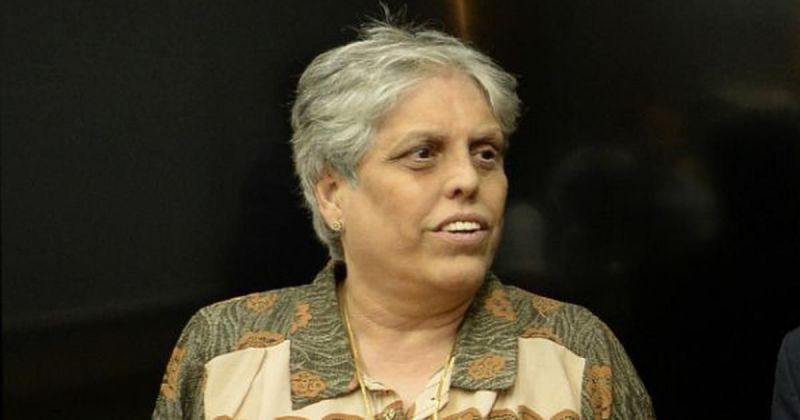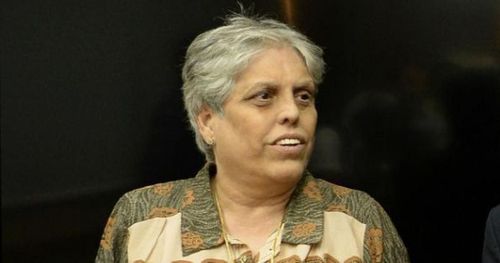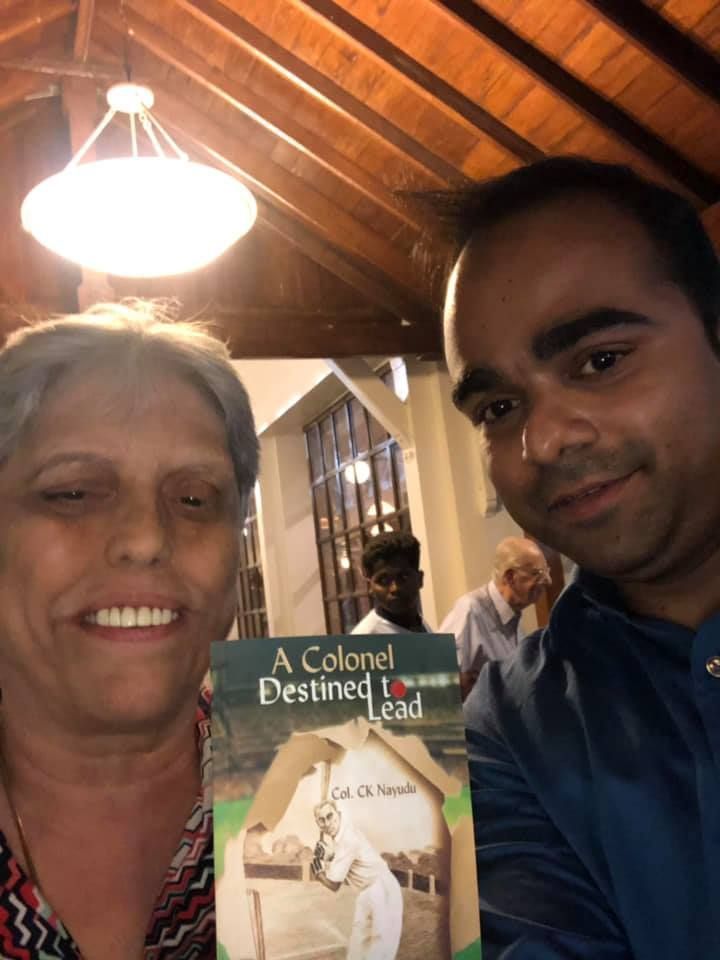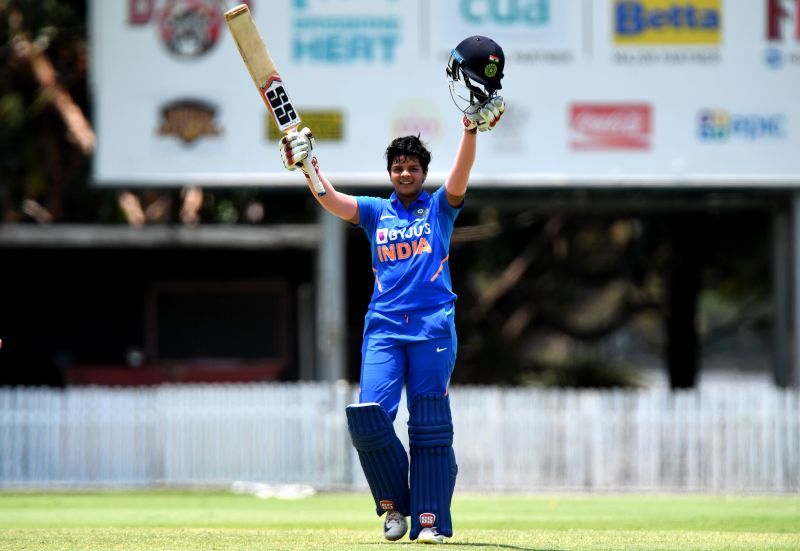
Diana Edulji: The extraordinary Indian captain fighting for women's cricket for 5 decades

Diana Edulji is easily one of the biggest names in women’s cricket in India. She was the country’s first captain in ODIs and led the team in two World Cups (1978 and 1993). With 63 wickets from 20 Tests, she is the third-highest all-time wicket-taker in women’s cricket.
Apart from her performance on the field, Edulji has been a central figure in the battle with the authorities to get due credit for women’s cricket. Until recently, she was part of the Supreme Court appointed Committee of Administrators (CoA), which looked after the functioning of the BCCI.
Amidst the current lock-down, Edulji was kind enough to spare some time to speak with us. Here are the excerpts from the interview:
How did you get into the game of cricket, considering the sport wasn’t very popular at that time in India?
Oh boy! Now you are going very back in the years. Well, I used to stay in a railway colony in Bombay (now Mumbai) called Badhwar Park at Cuffe Parade. And every weekend there used to be tennis ball cricket, where I was the only girl playing with 10 boys.
In school I was always interested in sports, and represented (the school) in many of them. I also played basketball and table tennis juniors for Maharashtra. I was very keen on table tennis and used to play all the open tournaments with the various gymkhanas. But there was too much competition at that time with the likes of Kashmira Patel, Naria Mowla and all these players, so I wasn’t able to break that barrier.
When Mrs. Aloo Bamjee started a club in the Cricket Club of India (CCI) in 1971, I thought, 'Since I like cricket and I have been playing it, why not try and make a name for myself?'
Looking back, I think I made the right decision. I went and joined the club. We used to practise twice a week, on Wednesday evenings and Saturday mornings. That’s how I got into cricket.
Also see – IPL winners list
Any special memories from the first Test victory in Patna against West Indies in 1976?
That was the only Test that we won during my career, and I was instrumental in hitting the winning run. So it was definitely a memorable moment.
There were about 20,000 to 25,000 people in the stadium. It was simply unbelievable. The drive from the ground to the hotel, which used to normally take only 15 minutes, took over 45 minutes due to the crowd.
Those were the things you could imagine only in men’s cricket. It is something that I still recollect. I can just close my eyes and see the scene play over again.
Coming back to the match, we needed only 55 runs to win the game in the fourth innings and we were already planning as to how we would celebrate the victory. (But) suddenly 4-5 wickets were down with hardly 25 runs on the board.
When I went out to bat, Susan Itticheria told me that I looked very pale. Actually, I was too tensed and when I walked out, I nearly threw up in anxiety. But Susan calmed me down and we decided to take it one ball at a time as there was no hurry.
We built the partnership and went through. I was happy enough to hit the winning runs.
How was it to lead the team in the 1993 World Cup? You were the only surviving member from the 1978 World Cup team.
It is always an honour to be given the captaincy of the team. It was a good side, but Australia and England were dominating the scene.
It was a good experience, (and) of course we did not do well again. I think we finished fourth. Those were difficult times for women’s cricket. We used to stay in dormitories in universities.
Eight matches played against Australia and New Zealand in the 1970s were not considered Tests for official records when the International Women’s Cricket Council (IWCC) merged with the International Cricket Council (ICC). How did you feel about that?
Very very depressing to read that our records had been shattered. I thought I had crossed 100 wickets and suddenly I was now with 60-odd wickets.
But I think it was a mistake on the part of the Women’s Cricket Association of India, who should have seen to it that those matches were recorded as official Tests. We were never told that we were playing unofficial matches.
The government clearances were for India vs Australia Tests, they were never for under-25 teams. Unfortunately, there was nobody to fight with the IWCC at that time.
The British and the Australians dominated the scene and nobody from India took up our case. We lost out on a lot of runs and wickets. It’s sad.
Some players have lost out on the benefits like pension too, as the matches that they played are not considered official. There is no way you can correct it now. I think it is too late in the day.
Did you personally highlight the case to anyone?
Yes, in fact Shubhangi Kulkarni was the secretary when this happened. We told her that she should have seen to it.
Her brother-in-law Mahendra Kumar Sharma was the secretary of Women’s Cricket Association during the time these matches were played, and he could have given letters to tell that these were official Tests. We had got grant from the government and the media had covered them as Tests.
I met one of the statisticians from England later on, but she was said that this was the record and nothing could be done about it. Anyway it is a lost story now.
You led the team which drew the ODI series against New Zealand in 1985 3-3 after being down 1-3. That was one of the first real success stories of the women’s team in India, and I'm sure you have very fond memories of it.
We had lot of good players in the team and we had finally mastered the one-dayers. We saw to it that we were not demoralized after trailing 1-3, and we did well for ourselves. It is something that we really cherished.
Women’s cricket has come a long way since your time. As a member of various administrative committees in recent years, what would you attribute that growth to?
I was very happy to be nominated by the Supreme Court in the Committee of Administrators (CoA). I was the only cricketer (male or female) to be part of that.
I am sure I did what I could to promote women’s cricket. Earlier no one used to take women’s cricket seriously. Luckily for me, 2017 was the year when the Indian team reached the finals of the 50-over World Cup, and everybody sat up and took notice.
When we reached the finals in 2005, there wasn’t much support for the team. I would say the turn took place after the 2017 World Cup. But once we win the World Cup, the turn would be even bigger.

Did you think that India could beat Australia in 2020 T20 World Cup final?
Yes, I think this was the most open World Cup. We had beaten them (Australia) in the league stage. This was an Australian team which was beatable and our team had the talent.
Unfortunately for us, their openers came to the party from ball one and took the game away from us right at the beginning.
What’s your take on Harmanpreet Kaur as the captain of the team?
She is a good captain and a good player, no doubt about that. But if she is finding it difficult then we should look for another captain.
It is her personal choice. Nobody can say anything, it is up to the selectors and her to decide.
What would be your advice to the young Shafali Verma?

She took us to the finals (in the T20 World Cup). It was unfortunate that she failed at the most crucial time. Maybe if the game against new Zealand wasn’t washed out, she might have failed there and performed in the finals. But this is all in hindsight.
Everybody says she is only 16 years old and so she should be left alone, but Sachin Tendulkar was also of the same age when he started. You have to make her understand the value of her wicket and not just settle for 30s or 40s. She has to go for bigger scores.
I think she should get into the ODI side and not be just a T20 player. She must understand that just hitting is not going to make her survive for a very long time. She has to improve her fitness.
What are your thoughts about the 2021 ODI World Cup and the return of Mithali Raj and Jhulan Goswami?
Their experience will definitely play a big role. I presume that Mithali would be leading the side. It all depends on how much cricket we will get before the World Cup.
As of now, I don’t see any domestic cricket starting in the near future. How much preparation time Jhulan and Mithali will have, and how they get back into shape, are question marks.
The only thing is that all countries are going through the same situation due to the lock-down.
Would you like to see an IPL for women’s cricket immediately?
No, I don’t think IPL should start right away. We should build up in phases.
Initially, we had just a game for the women during the IPL. Last year there were three teams. This year it was supposed to be four. But unfortunately, I don’t know if it will be held or not.
I think a full-fledged IPL for the women will take some time as we don’t have the domestic bench. We need to focus on the Under-19s and ensure a good supply chain for the senior team.
We need lot more India-A tours with bigger teams. Indian players should also go around playing different leagues across the world. There also have to be domestic tournaments at the state level.
The National Cricket Academy (NCA) should also be proactive for women cricketers. We need strength conditioning so that our players can clear the boundary line. Fitness levels and fielding have to improve.
Are you satisfied with the way the BCCI is currently looking after women’s cricket?
They are looking after it well. I won’t say no. Even after we (CoA) left, things have been good. And now that Shantha (Rangaswamy) is on the apex council, I am sure she would be able to put our wheels forward. Let’s see how it goes.
What was your experience in CoA like?
It was very good. I enjoyed it. I have always called a spade a spade. I have been like that and have never been overawed by the personality or the person in front.
I stuck to my guns, whether people liked it or not. I was the one who always said that we have to follow the constitution as laid down by the Supreme Court, come what may.
What I would like to say is that I want to the help the team in every possible way. Maybe mentor the team or something like that.
I would love to mentor this team and pass on my experience. If BCCI is willing, I am ready to play any role for them.
Any regrets? Anything that you would have liked to do differently in the CoA?
I was very clear in my mind that the conflict of interest was not going to work that way in India. I have put it in black and white, and it is on record. It is more anti-India.
If you have these strict conflict of interest rules, no Indian cricketer will be able to contribute. You can’t have a 'one person, one post' rule. We wanted to approach the Supreme Court, but we just couldn’t get to them. We had put (this) in our status report.
We lost out on a lot of good cases due to this. You are going to allow foreigners to come here and make money, and then allow them to carry on with their jobs in their countries. But our cricketers are losing out on assignments, like if you are with an IPL team, you can’t be with state team. It is very difficult.
Who is your favourite cricketer?
The person who taught me how to fight for my right was Rachael Heyhoe-Flint, the former England captain. She was the one who fought for women’s rights and got the locked doors opened for women’s cricket.
I always looked up to her, and the way she played the game and fought for what the women deserved. She was my idol.
Who is your favourite Indian player?
Rajani Venugopal, one of the best batswomen I have ever seen. Her batting was unbelievable. Even today I don't think anybody is near her.
Any message for the fans and media who follow women’s cricket?
Well, now they are doing a much better job. I just want them to continue to motivate the girls and give them the due. Keep us in the news with positive stories so that people are aware. Bring people to the ground and help women’s cricket grow.